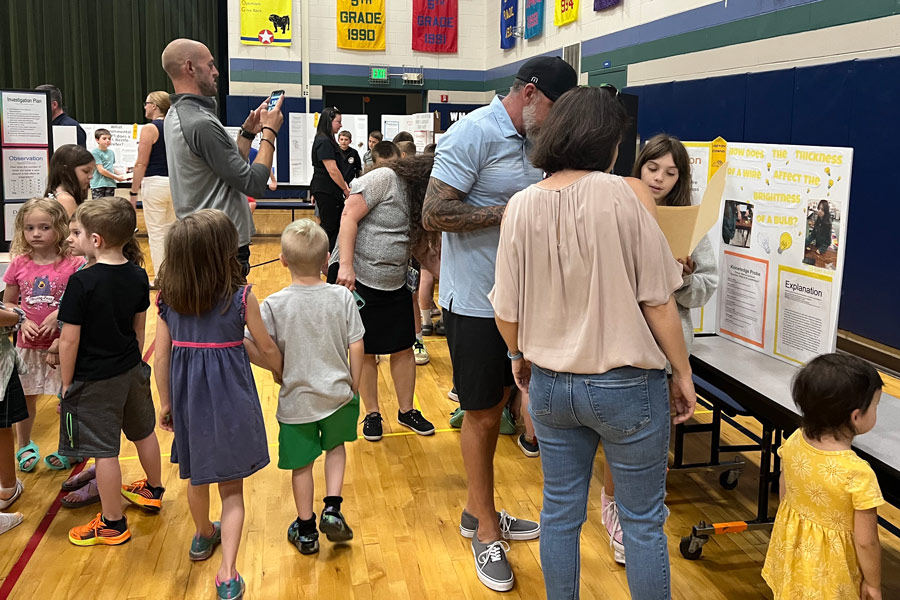East Grand Rapids — How does the color of water affect a liquid’s boiling point?
How do environmental factors affect daphnia?
How does temperature affect the rate a candle burns?
These were just some of the questions Breton Down fourth-graders spent three weeks exploring in preparation for the school’s annual science fair. During the event, they revealed their results to other students and family.
Focusing on a topic picked from what they have studied in life and physical science classes, the students made a hypothesis, tested it, and tracked their results. Each student then created an information board about their experiment and results and prepared talking points on how the project went and what they learned.
“We ask them what surprised them and what they would have done differently,” said fourth-grade science teacher Cheryl Radecki, who has been organizing the event for the past 18 years.
“While the questions might be similar as to what each student explored, you really have to look at the project board to see what they did,” Radecki said. “Also, students working on similar projects may have come up with different results.”
That was the case for fourth-graders Lauren Enriquez and Harper Paas. Both had studied how toxins affect wildlife by using a feather and oil. The students first dropped a feather from a height of 10 feet three times. Then they each dipped their feathers in oil and dropped the feather from 10 feet another three times. The last step was to clean the feather and do the drop experiment one last time.

“I found that the (original) feather dropped faster but I thought the feather with oil on it would have dropped faster because it would be heavier,” Lauren said, who was quick to point out that Harper’s results were different.
“My results showed that the cleaned feather dropped faster,” Harper said. “Feathers have barbules on them. When the feather was cleaned, some of the barbules were broken, creating less resistance when the feather was dropped.
“It is the reason I believe the cleaned feather dropped faster.”
Even though Penny Muessig had to do more tests than Wendy Raines on the effects of caffeine on daphnia, they both had the same results: caffeine does impact the daphnia (commonly called water fleas).
“The reason I had to do it six times was, we figured my first daphnia was sick and died during the experiment,” Muessig said. How did she know?
“The results,” Muessig said. “The number of heartbeats was dropping throughout the experiment.”

More from East Grand Rapids:
• Putting out the welcome mat
• A cheerful fixture at Breton and Hall: ‘he’s the sun’











